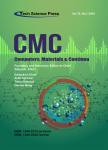FogQSYM: An Industry 4.0 Analytical Model for Fog Applications
作者机构:School of Information Technology and EngineeringVellore Institute of TechnologyVellore632014India Department of Industrial and System EngineeringDongguk UniversitySeoulKorea Division of Computer ScienceJeonbuk National UniversityJeonjuKorea
出 版 物:《Computers, Materials & Continua》 (计算机、材料和连续体(英文))
年 卷 期:2021年第69卷第12期
页 面:3163-3178页
核心收录:
学科分类:0202[经济学-应用经济学] 02[经济学] 020205[经济学-产业经济学] 0812[工学-计算机科学与技术(可授工学、理学学位)]
基 金:This work was supported by the National Research Foundation of Korea under Grant 2019R1A2C1085388
主 题:Fog computing industry 4.0 fog layer Markovian queuing model
摘 要:Industry 4.0 refers to the fourth evolution of technology development,which strives to connect people to various industries in terms of achieving their expected outcomes ***,resource management in an Industry 4.0 network is very complex and *** manage and provide suitable resources to each service,we propose a FogQSYM(Fog—Queuing system)model;it is an analytical model for Fog Applications that helps divide the application into several layers,then enables the sharing of the resources in an effective way according to the availability of memory,bandwidth,and network *** follows theMarkovian queuing model that helps identify the service rates of the devices,the availability of the system,and the number of jobs in the Industry 4.0 systems,which helps applications process data with a reasonable response *** experiment is conducted using a Cloud Analyst simulator with multiple segments of datacenters in a fog application,which shows that the model helps efficiently provide the arrival resources to the appropriate services with a low response *** implementing the proposed model with different sizes of fog services in Industry 4.0 applications,FogQSYM provides a lower response time than the existing optimized response time *** should also be noted that the average response time increases when the arrival rate increases.



